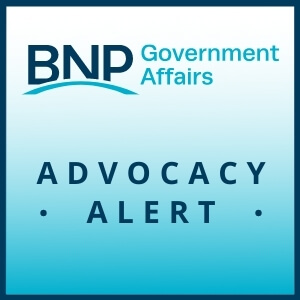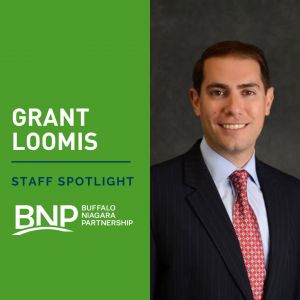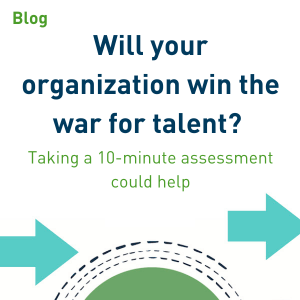5/6 Webisode: WNY Impact Survey Results
Blog Categories
May 6, 2020
The Partnership hosted a webisode to release the results of the WNY Impact Survey conducted in April.
The information gathered from the survey will be essential to better understanding how the public and private sectors can work together to address potential gaps in available resources now and during the inevitable economic recovery period that lies ahead. The survey asked employers to weigh in on a variety of topics including lost revenue, workforce impacts, and their ability to operate remotely.
Financial impact:
- 93% of respondents are experiencing a decline in revenue related to COVID-19
- Most report a loss of 50% or less of expected revenue
- 3 out of 5 businesses have postponed investment, many of them indefinitely
- 75% of respondents have applied or are planning to apply for federal business assistance loans
- 51% of businesses are reducing variable costs
- 43% are reducing fixed costs
- 2 out of 3 respondents report implementing a staffing change including reducing positions or adjusting wages/salaries
- More than 1/3 of businesses have reduced staff, mainly through temporary layoff or furloughs
- 60% of respondents have implemented a hiring freeze
Most pressing short-term concerns:
- 79% – Decline in revenue/sales
- 63% – Cash flow
- 42% – Wellbeing and safety of employees
Most pressing long-term concerns:
- 73% – Decline in revenue/sales
- 56% – Cash flow
- 40% – Cash reserves
How government can be most helpful:
- 60% – Expand and/or streamline federal loan programs
- 55% – Payroll tax cut
- 41% – Fast-track the release of reimbursements for contract work
- 28% – Repeal or suspension of certain reporting requirements
Readiness to work remotely:
- 1 out 3 respondents report not being prepared to switch to remote operations
- A quarter of responding businesses were prepared to deploy remote operation plans
- 1 in 5 respondents still do not have a functioning remote plan in place
Biggest concerns for the community:
- 35% – Permanent closure of local small businesses
- 31% – Health of the U.S. economy
Watch the Presentation Below
*****
The Buffalo Niagara Partnership is committed to providing employers with the latest information and resources to help you deal with COVID-19 and its impact on our community, state, and nation. Visit our Events Page and Resource Page, as they are updated regularly to provide you with the most current information.
We will continue to follow up as more information becomes available. Given the fluidity of this situation, please feel free to reach out to us with questions at connect@thepartnership.org and even more importantly, if you are willing to share best practices.
Related Posts
With Canada lifting most travel restrictions, border communities breathe sigh of relief
BUFFALO, N.Y. (The Buffalo News) —Dottie Gallagher, president of the Buffalo Niagara Partnership, said fears of random testing and possible quarantines in Ontario all worked to discourage significant aspects of the region’s integrated economy. She called the move “quite frankly, long overdue,” especially for those travelers discouraged to even try navigating requirements like ArriveCan.
9.26.22 Advocacy Alert: Canada to Remove All Border Restrictions
The Public Health Agency of Canada announced it will lift all COVID-related restrictions on international travelers beginning this Saturday, October 1.
Staff Spotlight: Meet Grant Loomis
We are pleased to introduce Grant Loomis, BNP’s Vice President, Government Affairs & Economic Development as our latest Staff Spotlight.
Grant is responsible for developing and advancing the BNP’s advocacy agenda.
Learn a little bit more about Grant in this brief Q&A.
Will your organization win the war for talent?
There are more jobs open than there are available people to fill them and so the odds are that organizations that have incredible cultures and work practices will win the war for talent.




